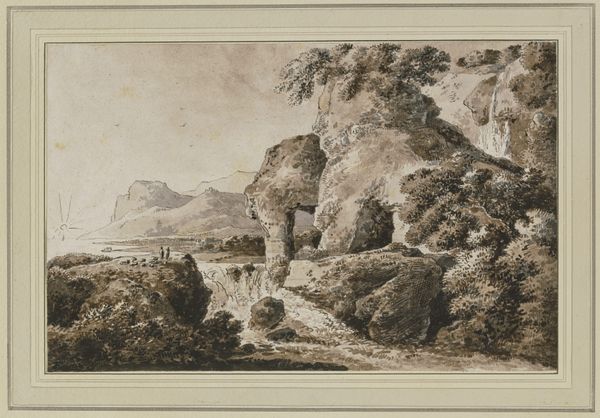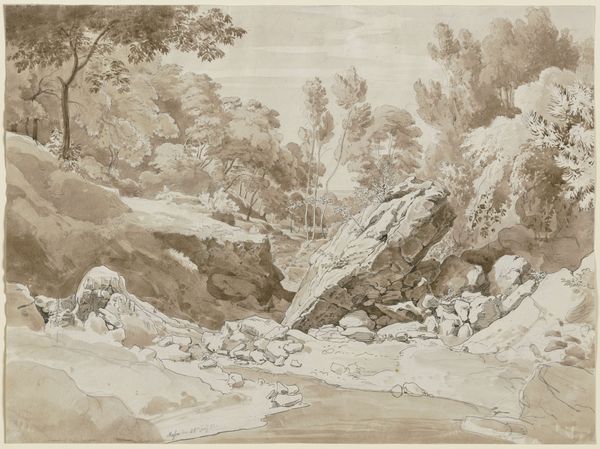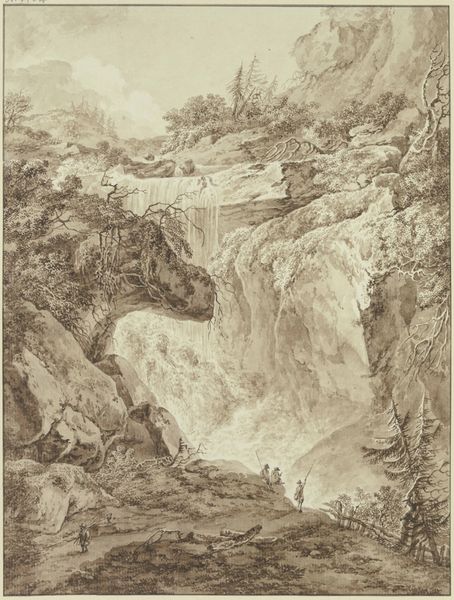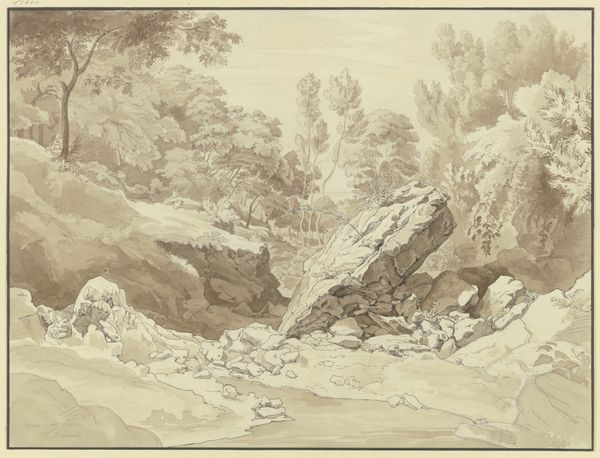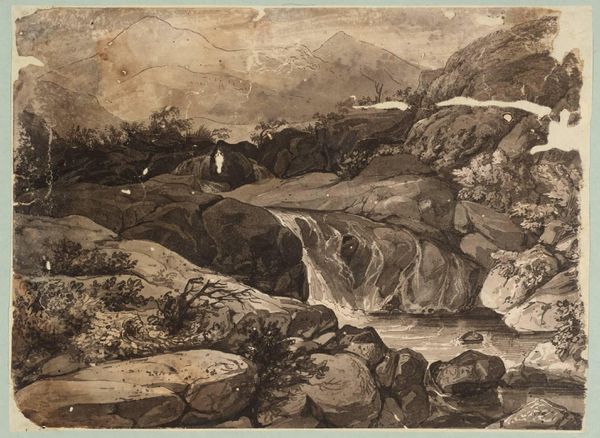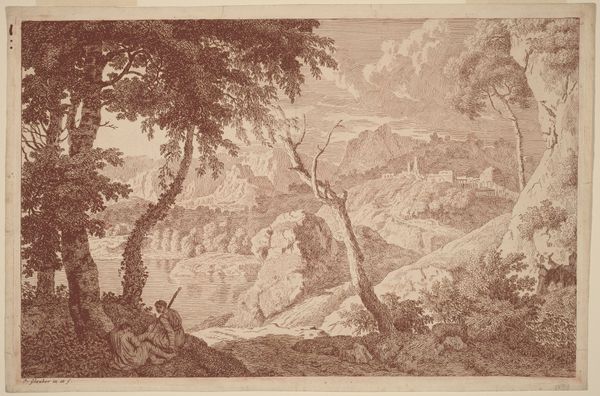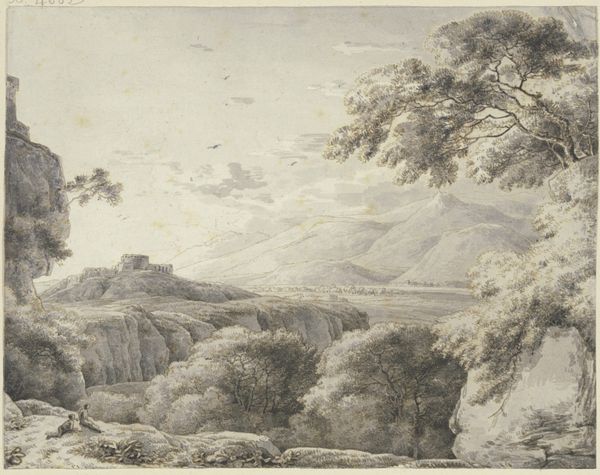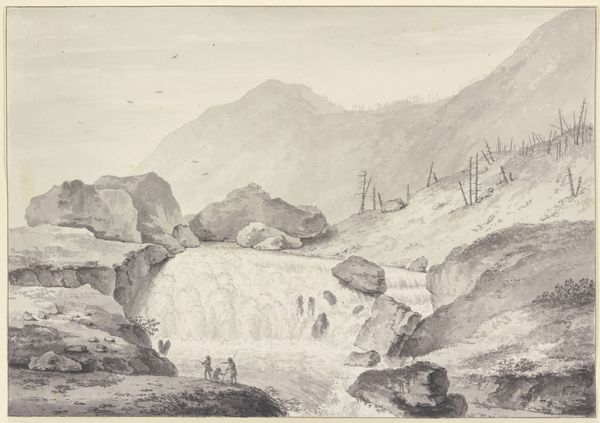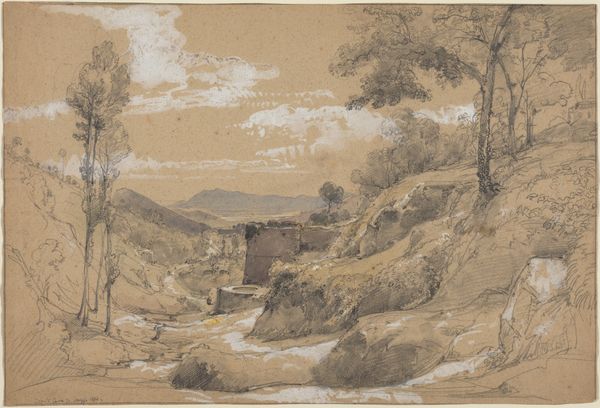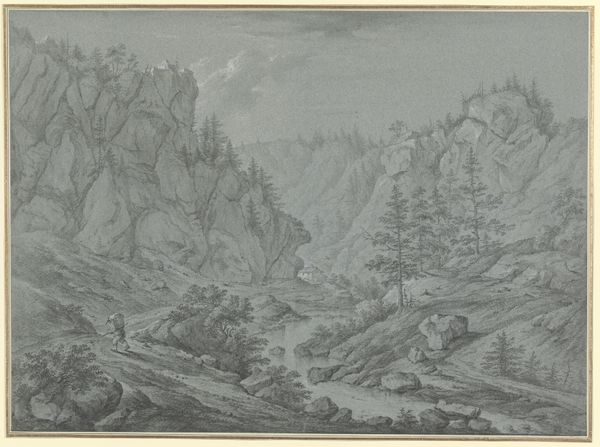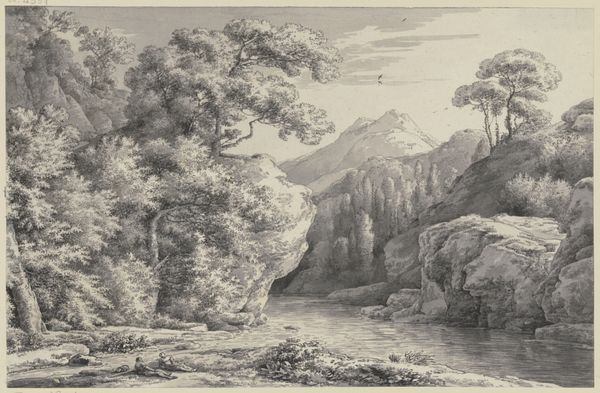
drawing, watercolor, ink, graphite, charcoal
#
drawing
#
landscape
#
etching
#
charcoal drawing
#
watercolor
#
ink
#
romanticism
#
graphite
#
watercolour illustration
#
charcoal
#
history-painting
Copyright: Public Domain
Curator: Franz Kobell’s "Landscape with Rock Grotto," housed here at the Städel Museum, presents a sublime vision of nature, executed in ink, watercolor, graphite, and charcoal. Editor: My first impression is that it feels...stage-like. The grotto frames the waterfall and figures almost like a theatrical backdrop. It emphasizes the scale of nature and relative smallness of us within it. Curator: Exactly. This staging connects to the Picturesque movement, aiming for arranged and framed natural views as aesthetic experiences accessible to elite society. Landscapes like this became symbolic assets, showcasing dominion and cultural refinement. Editor: So, less about wild nature and more about a controlled performance of nature? I’m struck by the contrasting textures achieved through the mixed media. The layered washes of watercolor create depth and atmosphere, but it's the charcoal that really defines the jagged edges of the rock, giving it weight, tangibility, suggesting the labour needed to extract such rocks from earth. Curator: That tension you observe is critical. These "wild" scenes were frequently consumed as prints and drawings in urban settings. So, the work plays on the fantasy of escape but always through the mediated experience that reinforced existing social structures and hierarchies. Editor: Which the careful composition totally supports. Everything leads our eye to the waterfall, that churning source of power, tamed only by our observation. Is the choice of medium saying something about making such scenes easily reproduceable for wider circulation to promote an ideology of nature? Curator: Certainly, and the portability of watercolor sketches aligns perfectly with the era’s emphasis on landscape drawing as a proper pursuit for cultured individuals. Nature was accessible—both physically for those with means and representationally through these visual economies. Editor: And the ease with which you can take a landscape and quickly sketch in graphite on a piece of paper reflects a changing attitude in which the ready-to-hand becomes more of a common method than painting on stretched linen canvases Curator: A key part of understanding this piece and period, seeing art less as expressions of personal vision and more as cultural commodities circulating within particular networks. Editor: So, we can appreciate the craftsmanship and composition, while also being mindful of the social frameworks informing its creation and reception. Thanks for broadening the lens.
Comments
No comments
Be the first to comment and join the conversation on the ultimate creative platform.
